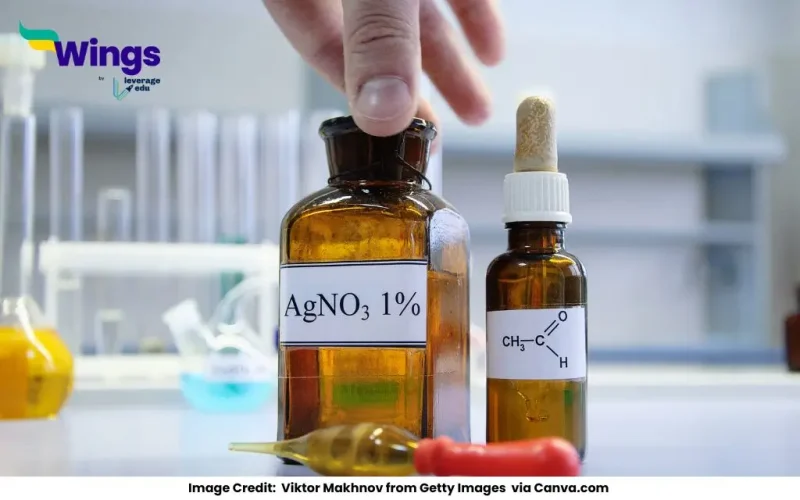Answer: The functional group –CHO is called the aldehyde group. It is a characteristic functional group found in aldehydes, a class of organic compounds that play a significant role in chemistry and biological processes.
Complete Explanation
The aldehyde functional group consists of:
- A carbonyl group (C=O), where carbon is doubly bonded to oxygen
- A single hydrogen atom (H) attached to the carbonyl carbon
Its general formula is R–CHO, where R represents a hydrogen atom or a hydrocarbon chain.
Examples of Aldehydes
Some common aldehydes include:
Formaldehyde (HCHO) – Used in disinfectants and preservatives
Acetaldehyde (CH₃CHO) – Found in ripening fruits and alcohol metabolism
Benzaldehyde (C₆H₅CHO) – Gives almonds their characteristic aroma
Properties of Aldehydes
- Reactive Nature: Aldehydes are highly reactive and undergo oxidation to form carboxylic acids.
- Distinctive Odour: Many aldehydes have strong, pleasant odours and are used in perfumes and flavouring agents.
- Solubility: Lower aldehydes (like formaldehyde) are soluble in water, but larger aldehydes are less soluble due to increasing non-polarity.
Reactions Involving Aldehydes
1. Oxidation: Aldehydes react with oxidizing agents to form carboxylic acids.
Example: CH₃CHO + [O] → CH₃COOH (Acetaldehyde → Acetic Acid)
2. Reduction: Aldehydes can be reduced to primary alcohols using hydrogen or sodium borohydride.
Example: CH₃CHO + H₂ → CH₃CH₂OH (Acetaldehyde → Ethanol)
The –CHO functional group belongs to aldehydes, which are crucial in organic chemistry, industry, and biological systems. From perfumes to metabolism, aldehydes influence many aspects of daily life.
Common Doubts in Chemistry
 60,000+ students trusted us with their dreams. Take the first step today!
60,000+ students trusted us with their dreams. Take the first step today!


 One app for all your study abroad needs
One app for all your study abroad needs










